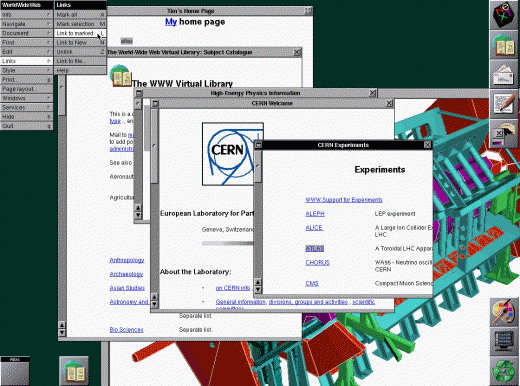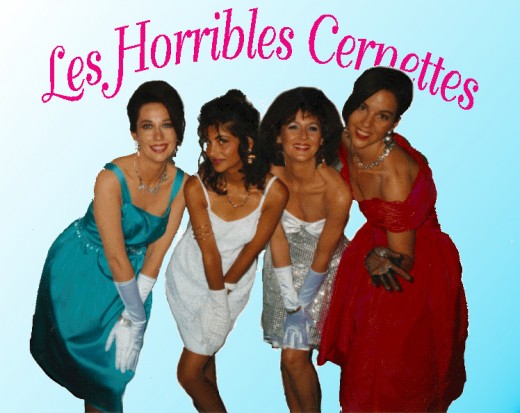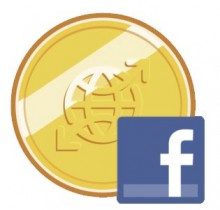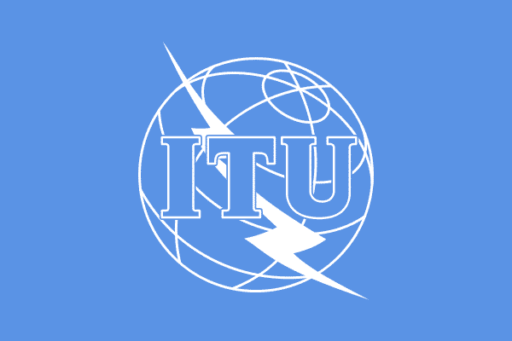The world wide web is 20 years old today and it seems like just yesterday we were hearing the pitter patter of little dial-up, delighting at the words you got mail and getting frustrated when calling our friends and receiving that dreaded busy signal. Many of us who regularly used the Internet before there was a World Wide Web to remember that there was a time when the two terms weren’t considered nearly synonymous by the general public, so please join us in saying “Happy birthday!” to the World Wide Web!
Today is a significant day in the history of the Internet and on 6 August 1991, exactly twenty years ago, the World Wide Web became publicly available. Its creator, the now internationally known Tim Berners-Lee published the first Web page and gave birth to a new technology which would fundamentally change the world as we knew it. The World Wide Web has its foundation in work that Berners-Lee did in the 1980s at CERN, the European Organization for Nuclear Research. He had been looking for a way for physicists to share information around the world without all using the same types of hardware and software. This culminated in his 1989 paper proposing ‘A large hypertext database with typed links’. While the initial proposal failed to gain much momentum within CERN, it was later expanded into a more concrete document proposing a World Wide Web of documents, connected via hypertext links. World Wide Web was adopted as the project’s name following rejected possibilities such as ‘The Mine of Information’ and ‘The Information Mesh’. The May 1990 proposal described the concept of the Web as thus:
HyperText is a way to link and access information of various kinds as a web of nodes in which the user can browse at will. Potentially, HyperText provides a single user-interface to many large classes of stored information such as reports, notes, data-bases, computer documentation and on-line systems help. We propose the implementation of a simple scheme to incorporate several different servers of machine-stored information already available at CERN, including an analysis of the requirements for information access needs by experiments.
The document envisaged the Web as being used for a variety of purposes, such as document registration, on-line help, project documentation, news schemes and so on. However, British Berners-Lee and his collaborator Robert Cailliau, a Belgian engineer and computer scientist, had the foresight to avoid being too specific about its potential uses. In 1990, working on a computer built by NeXT, the firm Steve Jobs launched after being pushed out of Apple in the mid-80s, Berners-Lee developed the first Web browser software called, fittingly, WorldWideWeb. By the end of that year he had a working prototype of the Web running on a server at CERN. Here’s what that very first browser looked like running on the NeXTStep operating system:
On 6 August 1991, the World Wide Web went live to the world. There was no fanfare in the global press. In fact, most people around the world didn’t even know what the Internet was. Even if they did, the revolution the Web ushered in was still but a twinkle in Tim Berners-Lee’s eye. Instead, the launch was marked by way of a short post from Berners-Lee on the alt.hypertext newsgroup, which is archived to this day on Google Groups.
The WWW project merges the techniques of information retrieval and hypertext to make an easy but powerful global information system.
The project started with the philosophy that much academic information should be freely available to anyone. It aims to allow information sharing within internationally dispersed teams, and the dissemination of information by support groups.
The post explained how to download the browser and suggested users begin by trying Berners-Lee’s first public Web page, at http://info.cern.ch/hypertext/WWW/TheProject.html. From here on, things began developing rapidly for the Web. The first image was uploaded in 1992, with Berners-Lee choosing a picture of French parodic rock group Les Horribles Cernettes. In 1993, it was announced by CERN that the World Wide Web was free for everyone to use and develop, with no fees payable – a key factor in the transformational impact it would soon have on the world. While a number of browser applications were developed during the first two years of the Web, it was Mosaic which arguably had the most impact. It was launched in 1993 and by the end of that year was available for Unix, the Commodore Amiga, Windows and Mac OS. The first browser to be freely available and accessible to the public, it inspired the birth of the first commercial browser, Netscape Navigator, while Mosaic’s technology went on to form the basis of Microsoft’s Internet Explorer.
The growth of easy-to-use Web browsers coincided with the growth of the commercial ISP business with companies like Compuserve bringing increasing numbers of people from outside the scientific community on to the Web. What was initially a network of static HTML documents has become a constantly changing and evolving information organism, powered by a wide range of technologies, from database systems like PHP and ASP that can display data dynamically, to streaming media and pages that can be updated in real-time. Plugins like Flash have expanded our expectations of what the Web can offer, while HTML itself has evolved to the point where its latest version can handle video natively. The Web has become a part of our everyday lives – something we access at home, on the move, on our phones and on TV. It’s changed the way we communicate and has been a key factor in the way the Internet has transformed the global economy and societies around the world. Sir Tim Berners-Lee has earned his knighthood a thousand times over, and the decision of CERN to make the Web completely open has been perhaps its greatest gift to the world. The Semantic Web will see metadata, designed to be read by machines rather than humans, become a more important part of the online experience. Tim Berners-Lee coined this term, describing it as a web of data that can be processed directly and indirectly by machines, a giant global graph of linked data which will allow apps to automatically create new meaning from all the information out there. Now in below you will find some comment about what will the Web be like in 20 years by TNW:
The pessimists
Some of you took a grim view of the future.
Henrik Sijswerda: Pessimistic view: increased identity validation, less or no anonymity. closed communities.
Daniel Radu: 20 years is a long time. My bet is that all the colors will fade away, as priorities like survival as a race will come first. This is by no means a pessimistic view, as the exponential growth of data won’t slow down much. Just for most of us – the access to it will be via 70s style ascii terminals rather then holodecks. Think flying cars in the 60s. And then think middle east now.
However, the technoloy race will continue in the background (with a less focus on making white devices with huge powerdraining screens and more focus on smaller processors) – making the web a suitable host for those who will aford digital versions of themselfes, agents to take care of all digital needs. The web in 20 years? Will be the only wonder of the world still standing
Michael Mozard: AT&T will own the World Wide Web and Charge 25 dollars a second to use it ! This is after congress finally allows the AT&T Sprint Comcast Verizon Time Warner Cox Merger.
Jean Ouellet: Twenty years from now, the information highway will become the information “park”way. Cluttered with incredible demands on amount of bandwidth available. New availabilities will be created but only accessible to very few people, those who can afford it. Users will become classify along their means, with the poorest at the bottom having the least access to technology. Those with the greatest access will be those with the greatest powers over society. A new Orwellian society filled with very few Big Brothers. On the other hand, everything may be fine! A more desirable outcome.
Polo High: More Internet censorship lol
Randy Hudson: In 20 years time The Net will primarily exist for those with power to keep an eye on those without power.
The futuregazers:
Some people let their imaginations take them to a far-flung future, full of new possibilities.
Chris Robinson: In 20 years, we will be emailing real inanimate objects (e.g., chairs, toys, etc.) as attachments.
Henrik Sijswerda: Optimistic view: meeting people using holograms as in real life, tv, music, movies, only over the internet (no cable companies).
Daniel Radu: 20 years go by, we manage somehow to keep the consuming status quo. Don’t ask me how I have no clue
The web will grow in dimensions, getting all our needs inside, not only communication and information. Each an every object in the physical world will have a digital synonym in the so called 3d web (think Opensim and it’s hypergrid protocol), and technologies like AR and ubiquitous computing will blend reality into a powermix of digital and virtual. We’ll get better at real world by filling it up with digital possibilities and probabilities, through gamification.
Dave Kinsella: “”20 years is the new 100 years” that’s a very astute observation. Personally, I’d like to think that we’ll be using implanted HUDs to seamlessly access the web for communication, financial transactions, work and whatever else we happen to be using it for. Similar to the technology used in (Cory Doctorow’s book) “Down and out in the Magic Kingdom”
Greg Lloyd: We may catch up to Vannevar Bush and As We May Think (July 1945) with effortless personal and contextual access to anything you’ve seen, heard, wish to recall again, use or share – with anyone, at any time, for any purpose.
Pedro Henrique Monteiro Padilha: Next 20 years? I see the internet creating a new global economy, with people selling and buying things from other countries without big taxes and with simple e-procurement process.
Internet will more and more allow people to work to companies on other countries or continents. It will also create a new way for all our social behavior, we will have web shows and maybe we pubs. The large bandwidth will help us connecting everywhere and we will no longer need TV as we know. Every TV show will be a stream to be brought in different languages.
Jeff Cormier: In 20 years we will be able to pull up a search query from the WWW using an implanted chip in our brains. the thought-controlled mechanism will render us super computers.
Hashem alDhaheri: In 20 years time we will be able to email other creatures in our Galaxy…free of charge!
Siddhartha Gupta: Computing will pervade every aspect of human life. Maybe we all would be able to plug into the matrix. Think Facebook will be the architect of that one.
Eric Baze: In 20 years people will be able to function directly as the connective nodes (routers) to the Internet. The power, function, and security features of future mobile devices (and perhaps remaining stationary smart appliances — entertainment, fridge, etc.) will be directly keyed to authorized individuals. Tech will become invisible and fade into the structure and decor of our lives. They’ll be made of sustainable materials, and possibly integrate biomimetics into the compontents. Personal data will be just that, because it will kept on-person by something like RNA sequences, nano-materials, or biomimetic storage devices. Device Interfaces will be keyed to neurological mapping information and data-mined user behavior/preferences for optimal user experience
3D printing and equal information access will have created an economic transition. Varieties of products will be purchased by download for tangible production in-house. Engineering of some products will change to accommodate production models using 3D printing. Business models will be primarily based on the exchange of customer information with other businesses, resulting in continued rise in “free” products and services at the cost of providing our personal information. The web will get smarter. Research in neural networks, artificial intelligence and artificial life will result in cloud-based apps which begin evolve literally, as much as by self-correction as by crowd-sourcing.
Hugo Magalhaes: I’m thinking fully fledged holograms, a la Star Wars, but also with flavours of Minority Report and a Star Trek holodeck, perhaps? All within easy grasp, considering Moore’s Law…
Jason Poggioli: Smartphones will continue to get more powerful, but without some significant breakthrough in battery technology integrated HUD displays in wearable glasses will continue to be very expensive. Serious science fiction leaps to biological integration won’t be commonplace in twenty years, either. That kind of integration will be reserved for amputees and others who will benefit greatly from computer/human interfaces.
Coupled with the crowd-sourcing capabilities of the internet it will impact manufacturing like a supernova. Almost overnight people will no longer need to purchase countless cheap, disposable items at the store.
Alex Wilhelm: In my eye, reading my thoughts. Porn on the go!
Rafael Pelon: If we can maintain #netneutrality for the next 20 years, we succeeded!
Guy Cookson: Invisible – because it will be incorporated into everything.
Maria Aretoulaki: Touchable, chatty and immersive.
Clare White: Surely to god we’ll actually be flying through the webs by then?
Balanced views:
Some people took a more balanced approach as they gazed into the crystal ball.
Mike Hendrickson: In 2020 the US will be bankrupt and have defaulted on what it owes China. The world economy will crash and China and Brazil will battle for control of the Web. Brazil will champion an Open web and China a closed tightly controlled web. Open will win again. And our Brilliant congressmen will resume using the pipes.
Laura F. Morales: We already started into the standarization stage of Internet in our lives. In 20 years everything will be connected to this LITERAL World Wide Web. Whoever is not online, DOESN’T exists, the only way to “disappear” is by diyng or well, pay someone a big bucket of money to “fake” your death… The communication devices will be by standard contact lenses, and ear pieces some how surfing the web and thinking will almost merge in one single process. We already are (according to Columbia University) depending highly on Search Engines for the information, we store less in our memory so everything will be accesible from anywhere from every device. I mean EVERY device, cars, refrigerators, OUR PERSON will be online, all the time.
Sadly lots of human beings will be left behind in the process, the most we delay in connecting everyone the most people will be left behind as Internet becomes the new standard for life. Living outside of it will be a more and more difficult task. And so, there’s my opinion
Santiago Ochoa: Companies like Google, Facebook, PayPal, Amazon, will create virtual currency systems linked to our social reputation. The more friends, posts, contacts, and comments we have, the more +1s, “like it”s or whatever points we’ll accumulate. These points will then be used to buy real things like you do now with PayPal and Amazon. Good social communicators will be able to make a living out of social networking points. Similar to Second Life but not limited to a virtual world. Our cell phones will be used as wallets and even some salaries will be paid with virtual money.
Terence Eden: The same speed. Faster pipes & processors – more bloated markup & JS.
Derek Bryant: If by WWW you mean websites/apps and their distant descendants then the answer is unimaginable, unless global economic meltdown means that we are communicating with cocoa tins linked by pieces of string
Cats:
If there’s one thing we can be pretty sure of, the Internet of 2031 will have cats – it’s only natural, right?
Tim Difford: I think in 20 years there’ll be animated gifs of kittens.
Joseph Stashko: Everything will be linked to LOLcats.
Mark Cadwaladr: I’m gonna bet on ROFLdogs as the natural internet selection replacement for LOLcats.
Web 3.0 from Kate Ray on Vimeo.
[ttjad keyword=”general”]












